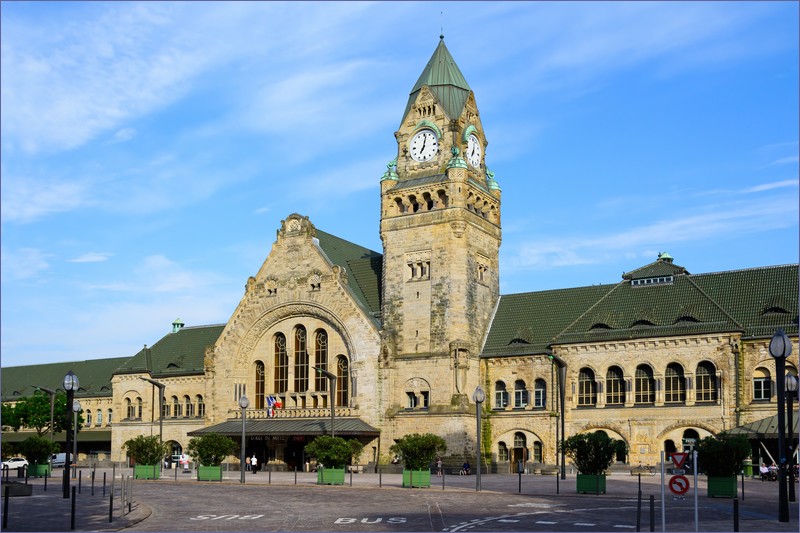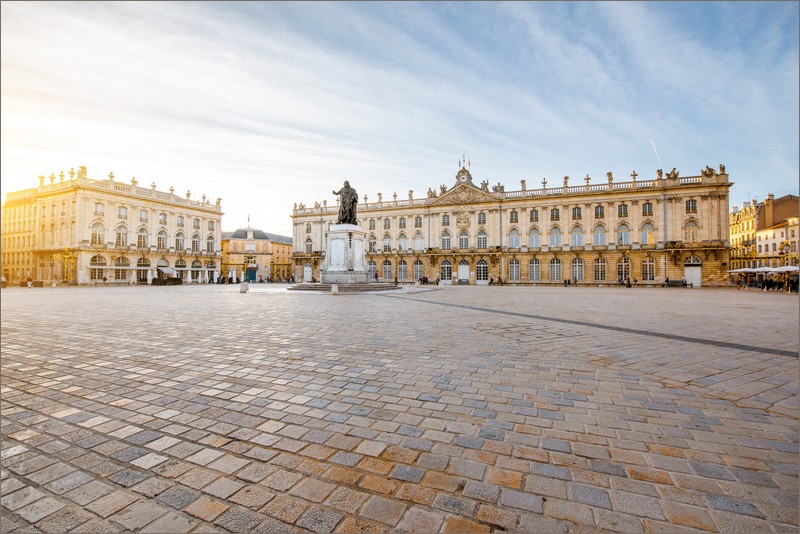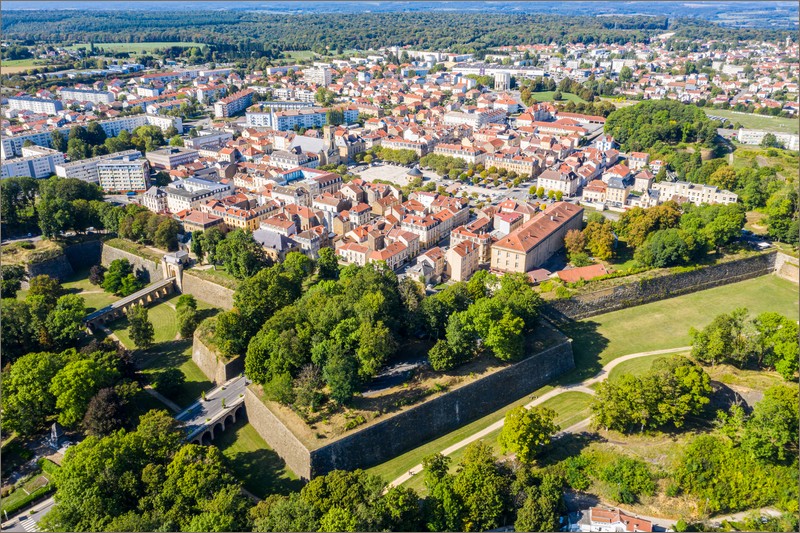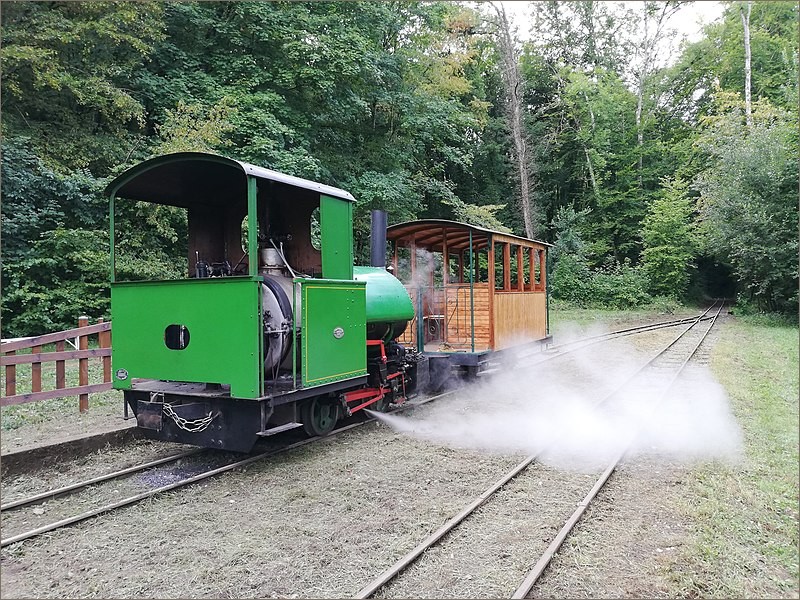Lorraine is a region in the northeast of France. It borders with Germany, Luxembourg, and Belgium. The Lorraine area belongs to the administrative region of Grand Est. The region is divided into four departments: Meurthe-et-Moselle, Meuse, Moselle and Vosges.
Passenger trains in Lorraine connect most important cities in the region but some of the major tourist attractions are not reached by train. The best starting points for explore Lorraine by train are Metz and Nancy. Thionville is the best option, if you want to extend your trip plan and visit also Luxembourg and Belgium. Journey time from Thionville to Luxembourg city is only 25 minutes by regional train.
Most important regional trains from Metz:
Metz – Nancy
Metz – Verdun
Metz – Forbach
Metz – Luxembourg
Metz – Sarreguemines
Metz – Strasbourg
Metz – Epinal
Most important regional trains from Nancy:
Nancy – Longwy
Nancy – Remiremont
Nancy – Strasbourg
Nancy – Bar-le-Duc
Nancy – St Dié des Vosges
Both cities – Nancy and Metz are connected with Paris by TGV trains.
Lorraine by train – useful websites:
TER Grand Est – regional trains in the region
Train travel in France – a comprehensive guide
Trains between France and Germany
Alsace by train

Lorraine by train – what to see:
Metz – the capital of the Lorraine, one of the oldest cities in France. Main railway station in Metz is one of the most beautiful railway stations in France. Most impressive bulding in the city is the Gothic Cathedral Saint-Etienne with magnificent stained glass windows. The Basilica of Saint-Pierre-aux-Nonnains from 4th century is probably the oldest church in France. You can visit well-preserved Old Town and the Centre Pompidou-Metz (a contemporary art museum). The city centre is located close to the railway station.
Nancy – the former capital of the Lorraine, the city about the same size as Metz. The central place of the Nancy – Place Stanislas is considered one of the finest city squares in France. The place is surrounded by beautiful buildings such as the City Hall (Hôtel de Ville), the Opera House, and the Fine Arts Museum. Strolling through the city center you can find a numerous Art Nouveau buildings. The Nancy School Museum (Musée de l’École de Nancy) showcases an impressive collection of Art Nouveau furniture, glassware, and decorative arts. The fine Duke’s Palace now houses Lorraine Museum (Musée Lorrain), which offers insights into the region’s history, art, and culture. The neo-Gothic Saint-Epvre Basilica from 19th century is known for magnificient stained-glass windows. Locals and tourists often visit the Pépinière Park (Parc de la Pépinière) situated close to the Place Stanislaus.

Verdun – the city was almost completely destroyed during World War I – only a few monuments survived. Only remaining part of the medieval city walls is the Châtel Gate. Cathedral of Our Lady of Verdun (Cathédrale Notre-Dame de Verdun): This impressive Romanesque-Gothic cathedral was consecrated in 1147. It features beautiful stained glass windows, a crypt, and a cloister. Visitors can also take a guide tours through an extensive network of tunnels and chambers in an underground citadel.
The surrounding area of Verdun is dotted with numerous and war memorials. Most visited is the Douaumont Ossuary where thirteen thousand crosses adorn the field in front of the ossuary, which holds roughly 130,000 unidentified remains brought in from the battlefield. The ossuary is located 8 km from the railway station in Verdun. The Meuse-Argonne American Cemetery is the largest American military cemetery in Europe.
Longwy is renowned for its impressive fortifications designed by the famous military engineer Sébastien Le Prestre de Vauban in the late 17th century. Star-shaped fortifications was listed as a UNESCO World Heritage Site. Visitors can see also Town Hall built in the first half of the 18th century, churches and Musée des Émaux et Faïences de Longwy dedicated to the town’s famous ceramic and enamel production.
Luneville located on the river Meurthe was a renowned resort in the 18th century. Main tourist attraction of the town is th Château de Lunéville, built in 1702 in the style of Versailles. The former King of Poland Stanislaus I established Église Saint-Jacques in 1745. There are many trains from Nancy and Metz which stop at Luneville station.
Bar-le-Duc – an interesting town historically divided into Lower Town and Upper Town. Visitors walking through narrowi, winding streets of the Upper Town can admire many Renaissane buildings. In the heart of the Upper town is located The Clock Tower (Tour de l’Horloge) dating back to the 14th century. It offers panoramic views of the town and surroundings. The 16th-century château houses the Musée Barrois offers dedicated to the region’s history, art, and archaeology.
The medieval village of Rodemack is located 8 kilometers from the nearest train station in Malling.
A large mine museum in Petite Rosselle lies 6 kilometers from the railway station in Forbach.
An impressive Malbrouk Castle is located 6 kilometers from the Apach station.
Mirecourt is a charming town famous for Museum dedicated to string and violins instruments. Currently, trains don’t stop at Mirecourt station but it can change in the future.

Tourist railways in Lorraine
There are three operational tourist railways in Lorraine.
Chemin de Fer D’Abreschviller is a very popular narrow-gauge forest railway operating from April to October on a 6.1-kilometer route. From April to June and September to October, the train runs on Wednesdays, Saturdays, Sundays, and public holidays, while in July and August, it operates daily. Passengers can also enjoy a ride in a special first-class carriage called the “Orient Express.” The round trip takes about an hour and a half. Abreschviller is a remote village, making it challenging to reach by public transportation. Buses from Sarrebourg run only 2-3 times a day. Sarrebourg is accessible by train from Nancy or Strasbourg.
Chemin de Fer D’Abreschviller – official website
Chemin de Fer du Val de Passey – occasional steam train rides on a short narrow-gauge route (600 mm). Public rides are available only a few times a year, offering a unique experience for train enthusiasts. Total length of the route is 800 meters.
Chemin de Fer Touristique de La Vallée de La Canner – a vintage train operating on a twelve-kilometer line between Vigy and Hombourg-Budange. This route is notable for its very atmospheric, vintage rolling stock. Scheduled trips use historic railcars, while steam trains run on selected days from May to October.
Chemin de Fer Touristique de La Vallée de La Canner – official website
In addition to the mentioned railways, there are several short underground railway routes within the fortifications of the Maginot Line. These provide a unique and historical perspective on this famous line of defense.
